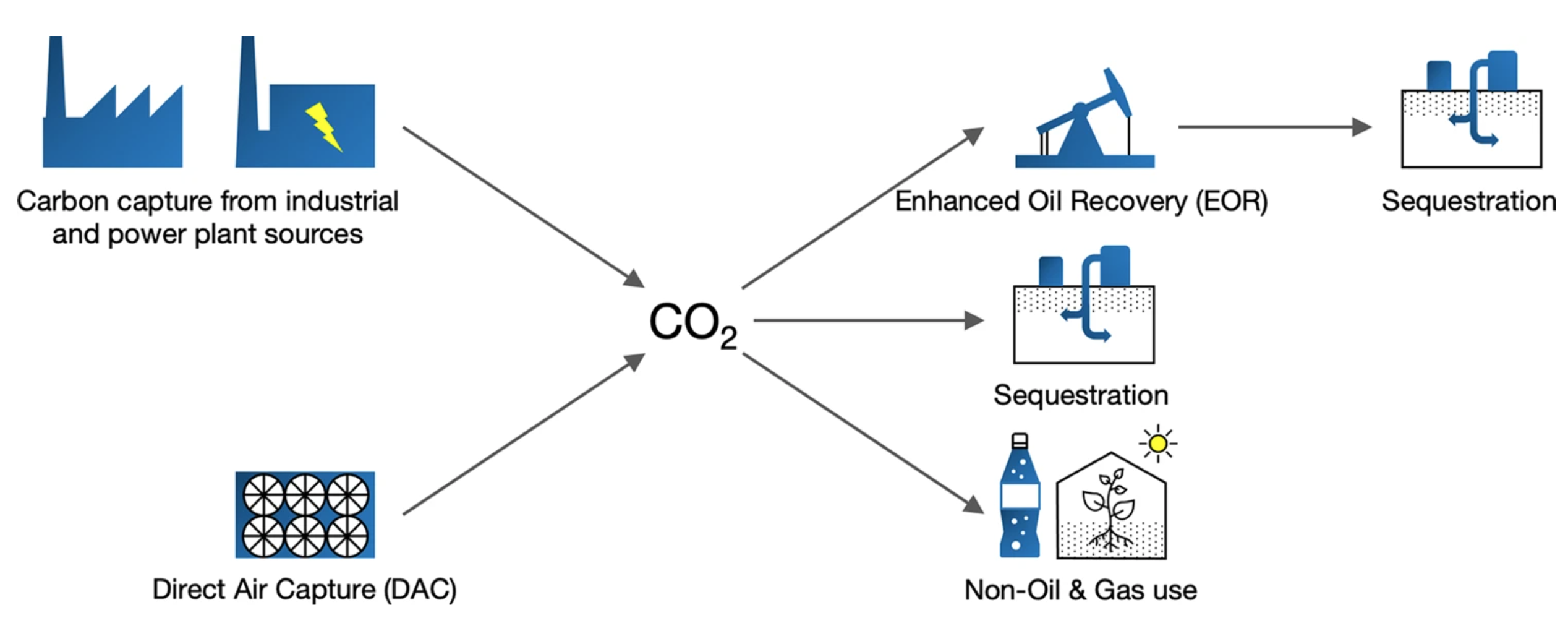Negative emission strategies, which mitigate climate change by capturing atmospheric carbon, are critical to avoiding the worst impacts from climate change. However, engineered technological solutions like direct air capture (DAC) are not yet cost-competitive or widely used. As with past low-carbon technology transitions like solar and wind, meaningful progress towards negative emissions calls for effective policy and political strategies.
A new study out today, co-authored by associate professor of environmental science, policy, and management Jonas Meckling and published in Nature Communications, identifies and reviews strategies that could create markets and build political support for DAC deployment. Meckling and his co-author Eric Biber, a professor at Berkeley Law, outline how leaders could pursue policies that advance climate goals.
Climate scientists warn that, if the world hopes to keep the rise in global temperatures below a catastrophic level, ambitious emissions reductions must be coupled with atmospheric CO2 removal at a massive scale. Though various technological and natural approaches can remove CO2 from the air—for example, through reforestation or the improved management of crops—many have limitations related to land use, permanency, and other factors.
Direct air capture (DAC) is the use of technology that filters carbon dioxide from the air through various chemical reactions. Moreover, it requires less land than many natural negative emissions processes, and it delivers carbon dioxide in a compressed form for reuse or storage deep underground. Many researchers find DAC to be an attractive option when combined with other negative emissions methods.

Currently, two main barriers stymie the widespread adoption of DAC. First, the high cost of such technologies is prohibitive and makes adoption uneconomical. Second, there is limited market demand for the primary product, CO2, that is created by DAC. This is why, the authors write, policy will play a crucial role.
“High carbon prices would be desirable and cut help to drive DAC deployment, but they are politically unattainable,” says Meckling. “Ongoing technology transitions are suggesting that sector-specific policy mixes of performance or deployment mandates combined with incentives such as subsidies or tax credits are the way to go.”
Meckling and Biber describe how specific policies and financial incentives can promote DAC deployment, build broad political support, and encourage its spread around the globe. Policy makers need policy mixes, the authors write, that can reduce technology cost through financial incentives like subsidies and tax rebates. Furthermore, regulatory mandates can ensure that new technologies like DAC spread, as when California and China created electric vehicle mandates that led to the growth of markets for electric vehicles. Regulation could require, for instance, that fossil fuel companies capture and sequester a certain amount of CO2 for each barrel of oil produced.
The researchers also ask how strong initial policies can encourage other countries to follow suit. For instance, Germany and Japan were early adopters of solar photovoltaics, which allowed for “spillovers” into less affluent countries by lowering the costs of the technology and prompting knowledge transfers between global firms.
“In developing policy for emerging low-carbon technologies, we need to learn from ongoing clean technology transitions in solar, wind, and electric vehicles,” says Meckling. “This also requires tailoring the lessons learnt to the specific challenges of the new technologies. Low-carbon transitions tend to be technology and sector-specific.”
At Rausser College, Meckling leads the Energy and Environment Policy Lab. His research primarily focuses on clean energy transitions, the political forces that drive them, and the global politics behind energy innovation. Read the full study in Nature Communications.
